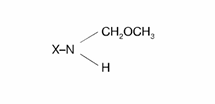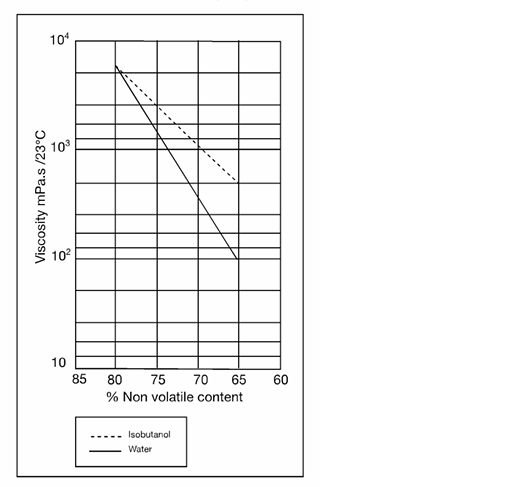Enhanced TDS
Identification & Functionality
- Blend
- No
- CASE Ingredients Functions
- Carrier
- Chemical Family
- Function
- Crosslinking Agent
- Product Code
- MITM00241
- Single Ingredient
- Yes
- Technologies
- Product Families
- Chemical Structure

Features & Benefits
- CASE Ingredients Features
- Labeling Claims
Applications & Uses
- Compatible Polymers & Resins
- Product Applications
In solvent borne systems:
- CYMEL® 323 Resin is a methylated melamine-formalde- hyde crosslinking agent with a medium to high degree of alkylation, a low methylol content and medium to high imino functionality.
- CYMEL® 323 Resin is a very effective crosslinking agent for backbone polymers containing hydroxyl, amide and, to some extent, carboxyl functional groups, such as epoxy, alkyd/polyester or acrylic resins.
- CYMEL® 323 Resin is suitable for a wide range of industrial stoving systems, providing exceptional fast cure response.
- The baking volatiles from CYMEL® 323 Resin contain very low levels of formaldehyde even though the tendency to self condensation takes prefer- ence over the crosslinking reaction. Compared to other high imino, methylated crosslinking agents, CYMEL® 323 Resin shows improved film hardness, solvent and humid- ity resistance.
In water borne systems:
- CYMEL® 323 Resin is soluble in water, and has an excel- lent compatibility with water soluble backbone polymers.
- The carboxyl functionality of anionic backbone polymers is sufficiently acidic to catalyze the reaction at relatively low temperature curing schedules.
- In all water bomne sys- tems where speed of cure is very important, CYMEL® 323 Resin is strongly recommended.
Catalysis:
- CYMEL® 323 Resin requires weak acid catalysts for cure at normal baking schedules.
- The acidity of the primary film former is usually sufficient to initiate the curing process.
- The cure can be additionally catalyzed by weak organic or inorganic acids such as CYCAT 296-9 catalyst, which has proved to be a very effective catalyst for these systems.
Properties
- Physical Form
- Soluble In
- Stability Data
- Formulated systems containing CYMEL® 323 have to be stabilized with primary alcohols, amines or with a combination of these.
- For water borne systems a pH value between 7.0-8.5 should be maintained to achieve stability.
Technical Details & Test Data
- Viscosity vs Percentage Non Volatile Content Graph
Typical Thin-down Curve in Isobutanol/water (at 23°C):

Packaging & Availability
Principal Information
- Group Principal Number
- S000001
- Principal
Storage & Handling
- Storage Conditions
- Storage stability at ambient temperatures is minimum one year after delivery. Avoid direct sunshine.
Other
- Appearance
- Clear liquid
- Appearance (SDS)
- Viscous liquid isobutanol
- Color (SDS)
- Water
- IATA/ICAO Proper Shipping Name
- Resin solution
- IATA/ICAO UN Number
- UN1866
- IMO/IMDG Proper Shipping Name
- Resin solution
- IMO/IMDG UN Number
- UN1866
- Item Number
- Other Hazards
- Not applicable
- TDG Canada Proper Shipping Name
- Resin solution
- TDG Canada UN Number
- UN1866
- USA/DOT Proper Shipping Name
- Resin solution
- USA/DOT UN Number
- UN1866
- Optical Properties
Value Units Test Method / Conditions Color Scale max. 70.0 APHA APHA Color Scale max. 70.0 Gardner Gardner ISO 6271 - Chemical Properties
Value Units Test Method / Conditions Free Formaldehyde Content 0.3 % % ISO 9020 pH 7.0-8.5 - - Shelf Life & Stability
Value Units Test Method / Conditions Shelf Life 1.0 yr yr - Physical Properties
Value Units Test Method / Conditions Density 1120.0 kg/m³ kg/m³ ISO 2811 at 23°C Flash Point 33.0 °C °C ISO 3679 Viscosity 2500.0-7500.0 mPa.s mPa.s at 23°C Viscosity 2500.0-7500.0 mPa.s mPa.s Viscosity 2500.0-7500.0 mPa.s mPa.s ISO 3219 at 23°C - Material Composition
Value Units Test Method / Conditions Non-Volatile Content 78.0-82.0 % % at 45°C, foil, 45 min - SDS Physical and Chemical Properties
Value Units Test Method / Conditions Boiling Point (SDS) 108.0 °C °C Density (SDS) 1.134 g/cm³ g/cm³ Evaporation Rate (SDS) 0.62 % % Butyl acetate = 1 Flammable Limits (SDS) 1.2-10.9 %(V/V) %(V/V) Flash Point (SDS) 33.0 °C °C Pensky-Martens Closed Cup (PMCC) Relative Vapor Density (SDS) 2.55 - Air = 1 Vapor Pressure (SDS) 10.0 mm Hg mm Hg At 22°C Volatile Content (SDS) 20.0 %(W/W) %(W/W) pH (SDS) 6.0-9.0 -
